Bangladesh: Flood-hit families find safety on higher ground
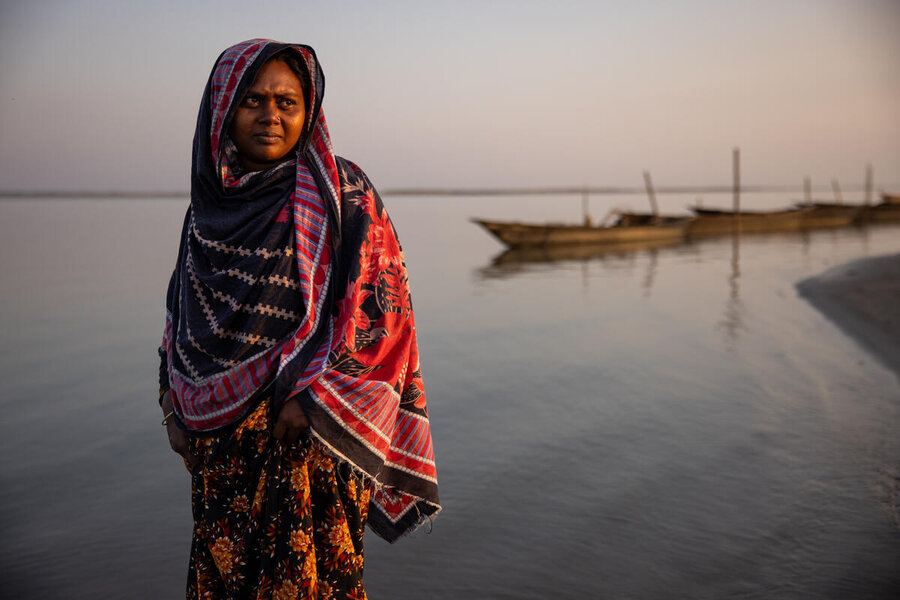
Parul Begum lives on a remote sand island in Kurigram, northern Bangladesh – one of the country’s poorest and most flood-prone districts.
Before, her home was upstream, but then she lost it to the river.
“When floods come, the tides eat away at the land,” Begum explains.
Growing up, Begum watched her father, a farmer, build bamboo rafts to keep the family afloat during floods. “My parents would put me on the raft and stand in the water themselves,” she remembers.
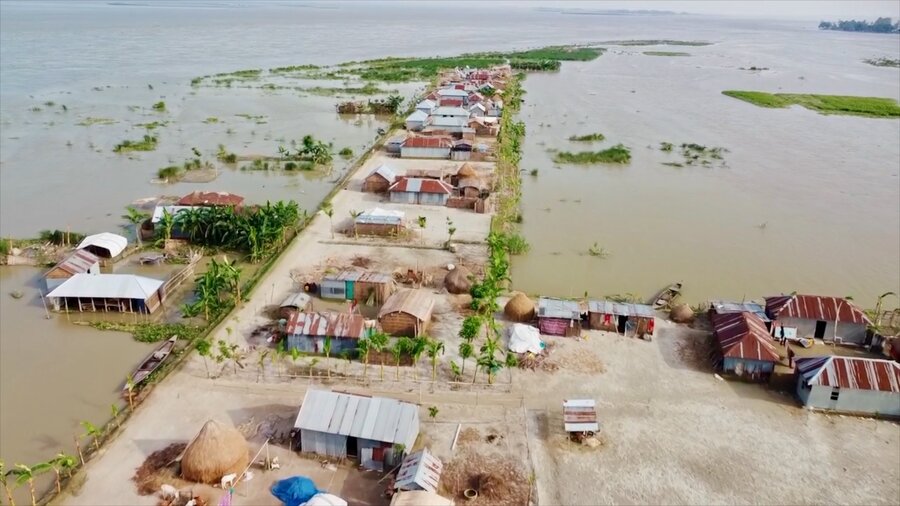
For centuries, seasonal monsoon floods have been woven into the daily life of countless communities in low-lying Bangladesh. But that natural rhythm is intensifying as weather patterns become more extreme, making the South Asian nation one of the world’s most vulnerable to natural disasters.
Flooding has long displaced millions, crippled livelihoods and - along with other shocks including persistently high inflation - been a major contributor to severe food insecurity that currently affects millions of people countrywide.
But in places like Kurigram, the World Food Programme (WFP) and our local partners are supporting the Government of Bangladesh’s efforts to build the resilience of at-risk communities to flooding and other extreme weather events. The effort focuses especially on vulnerable people living in the country’s riverine and flood-prone regions - giving them the tools to adapt to disasters before, during and after they occur.

A single mother of two, Begum has responded to the same challenges as her parents during the monsoon months. Built rafts to keep her little boys dry. Stayed awake at night, to make sure they didn’t fall in the floodwaters and drown. Stretched the little food left.
“Food becomes so hard to come by that we end up eating once a day,” she says. “If I eat, there isn’t enough for the kids.”
High and dry
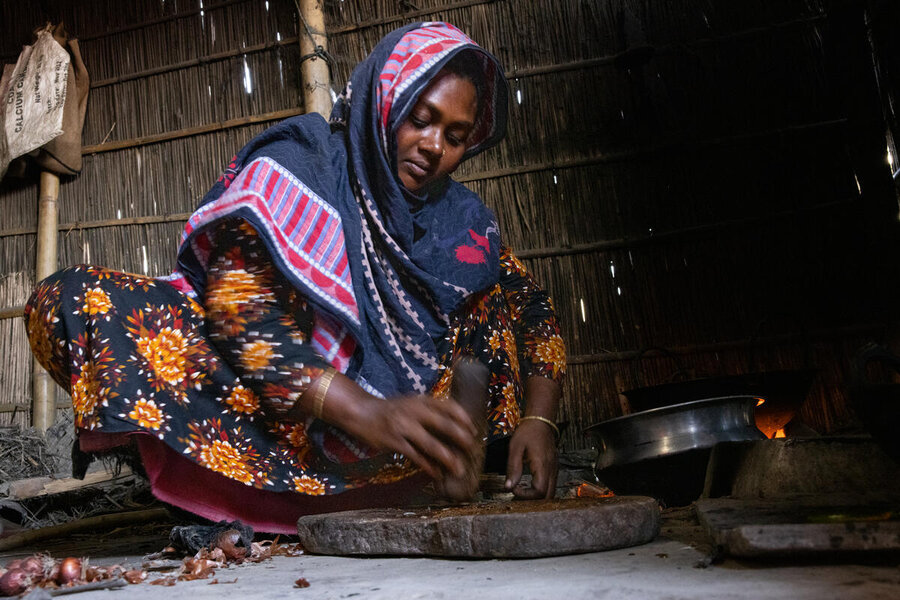
Through programmes such as WFP’s anticipatory action assistance - which provides timely cash transfers to at-risk households before flood levels peak - Begum was able to buy dry food and medicine. The roughly US$50 in aid helped tide her family through the most difficult days. But she couldn’t save her crops or the animals she raised.
Then last year, WFP launched another element to the programme. The goal: to help communities withstand floods, not just recover from them.
Members of Begum’s community worked with WFP engineers to determine how high their land needed to be to stay dry. Then came the physical work to elevate their homesteads: carrying earth, shaping embankments and installing tube wells to guarantee safe drinking water during monsoon rains and dry spells alike.
Begum and her neighbours were involved in every step of the project, receiving WFP cash assistance for their work - which helped them buy food and other essentials. Ultimately, some 400 families saw their homes raised above dangerous flood levels.
“If my house was still down there, the floods would have sunk it,” says Begum, referring to 2024 floods that were among the worst Bangladesh has seen in recent years. “We would have been swept away by the tides.”
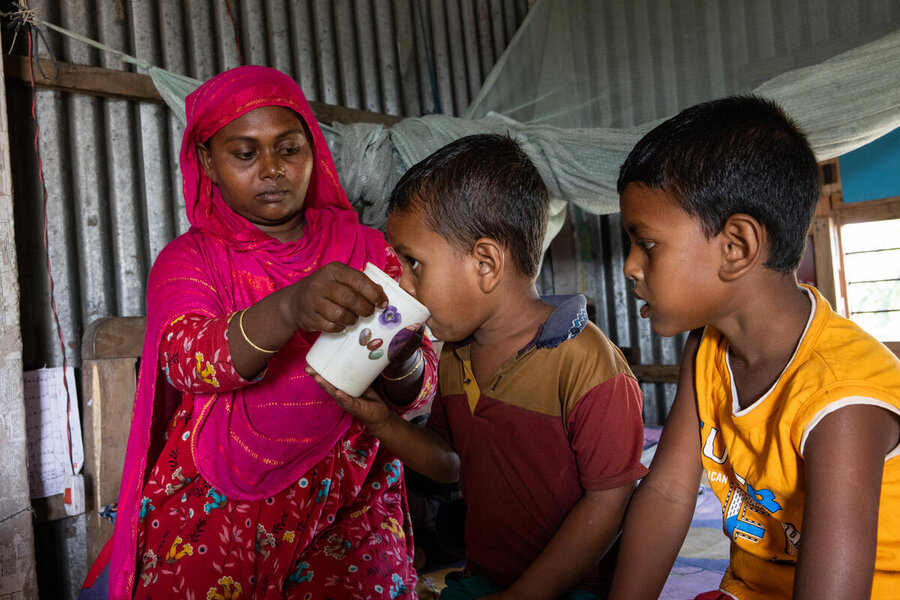
Now, for the first time in her life - and despite this year’s unusually early monsoon rains - Begum’s home and livestock are protected.
“After moving up here, we are not afraid anymore,” she says.
The land-raising project counts among WFP’s broader work to support communities in managing disaster risks.
Last year, roughly 40,000 Kurigram households also received timely flood alerts, with the most vulnerable also receiving early cash support to help protect their families, homes and livestock.
WFP is also working with the Government to integrate such early action initiatives, along with climate risk insurance into national disaster management and social protection systems - expanding coverage and improving effectiveness.
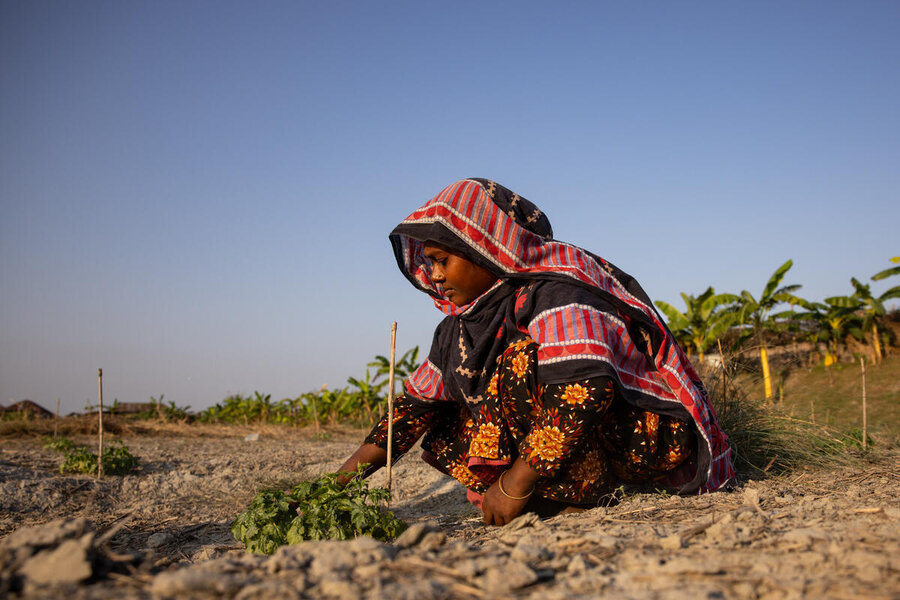
With more flood protection, Begum can focus on providing for her children – a responsibility that has fallen entirely on her shoulders since her husband left. She works as domestic helper, makes intricate quilts, grows vegetables and raises livestock, but it’s never enough to make ends meet.
“I can’t educate my children properly,” she says. “I can’t give them good clothes. This really hurts me.”
Begum carries many worries. But fleeing to higher ground when the next floods arrive is no longer one of them.
And when she puts her sons to bed tonight, it won’t be on a raft.
Germany, Ireland and the Korean International Cooperation Agency (KOICA) contributed to WFP’s risk management pilot in Bangladesh.
